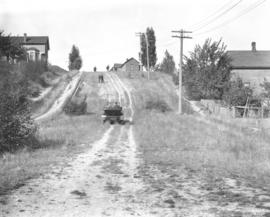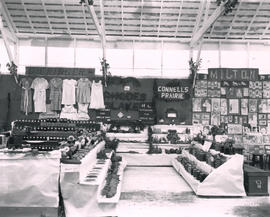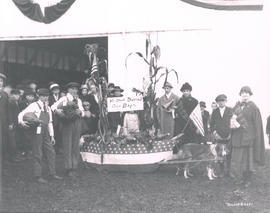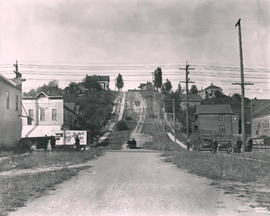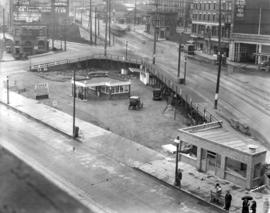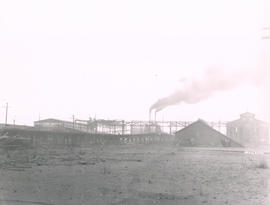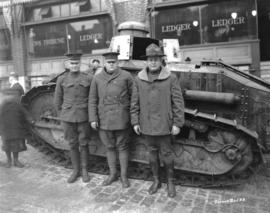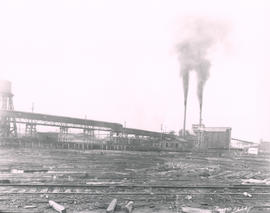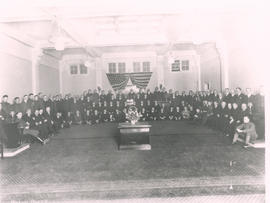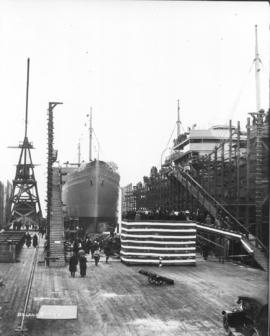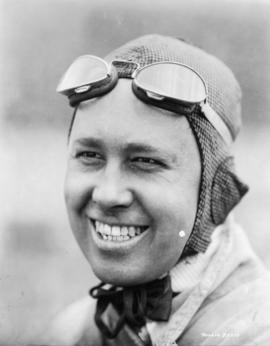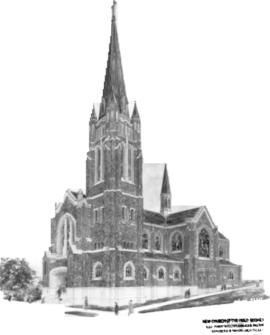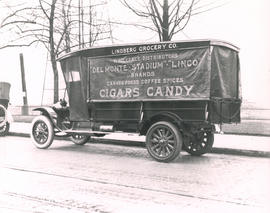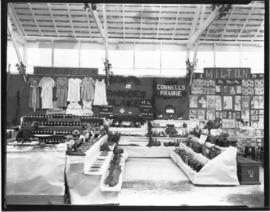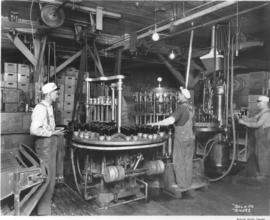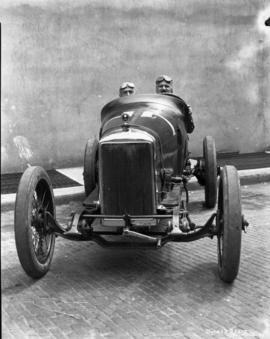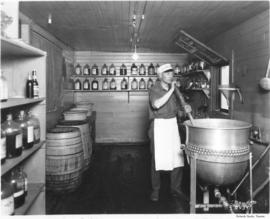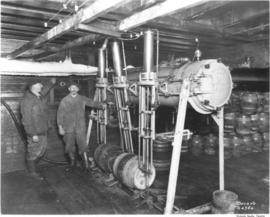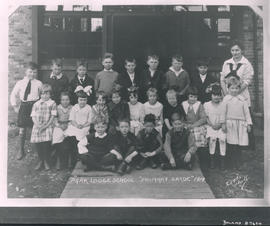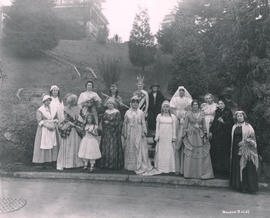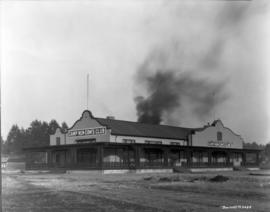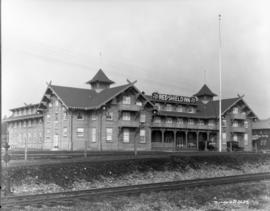- Item
- 1919-10
Part of Marvin Boland Photographs
An open automobile with its two occupants chugs valiantly up the steep "K" Street hill in October of 1919. It was not an uncommon sight to see new vehicles test both the driver's skill and the car's capability on the hill, which headed north from Center Street. Four men stand near the top of the hill to witness the strength of this particular automobile. The unpaved dirt road, hampered by tall grass, was virtually impassable in wet weather. The hill was closed and traffic diverted to South "J" Street circa 1960. Photograph ordered by Pacific Car Co.
Dirt roads--Tacoma; Automobile driving--Tacoma--1910-1920; Automobiles--Tacoma--1910-1920;
